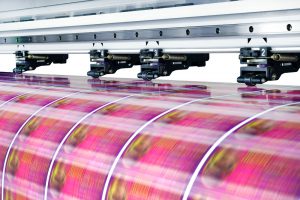 Today, everywhere you go, dozens (if not hundreds) of messages are vying for your audience’s attention.
Today, everywhere you go, dozens (if not hundreds) of messages are vying for your audience’s attention.
And it’s not just other signage. Every person you’re trying to reach is carrying a distraction factory in their pocket—assuming it’s not already out in their hands and keeping them from seeing the stunning signs you’ve worked so hard on.
At the beginning of the digital age, the Raster Imaging Processor (RIP) was the premier tool of printers and repro houses. Today output devices take center stage, along with file sharing, remote access, and Cloud storage applications.
However RIPs still matter—a lot! Indeed, print quality depends upon it.
So what should large format print providers and sign makers look for when choosing a RIP? I have identified nine questions that should be asked.
- Do bundled RIPs offer good value?
Value is in the eye of the beholder. There are many excellent RIP software packages from leading suppliers bundled with printers.
A bundled RIP/printer purchase is a good way of ensuring compatibility, but users should look beyond the headlines and the price tag.
One important thing to remember is that this is a business decision as well as a technical one. What is your business’s USP? Fast and cheap? Top quality in everything? Or somewhere in between?
Do you need to consider the ability to add more printers or a cutter in the foreseeable future? These factors should influence your buying decision.
- Do you know who made the software bundled with the printer?
Is it branded and supported or vanilla and anonymous? What’s the track record of the supplier?
Knowing the origin of your software will inform your decision. If it’s proprietary to the large format printer supplier, find out as much as you can about support, upgradeability, scalability, and flexibility.
If you can’t learn anything about the supplier of your RIP, should you trust your business with it? How will you handle a color management problem? Where will you go for support? If the manufacturer is 10,000 miles away, where do you think the software supplier is?
If you really love the printer, find out if it will run RIP software from a supplier you are familiar with.
- Does the RIP software package offer the features, versatility, and flexibility your business needs to grow? To play golf well, you need more than just a nine iron. Look for the tools you need to do the job well.
Look also for things that you may need in the future. For example, how easy is it to add new devices to the RIP? Are you going to need a comprehensive suite of tools to give you maximum versatility? Are there applications missing that you may need?
Alternatively you may not need a lot of bells and whistles, and a more basic, but robust, RIP will be more cost-effective. Just be sure to double-check its upgradability and support!
- How well will it integrate into your business? You don’t want little islands of different software in your production shop. So look for RIP software that will support the majority of your equipment.
For example, if you do a lot of banners and have more than one printer and perhaps a cutter, you may need a RIP software that can combine these functions and drive all your devices. It will simplify operation, streamline workflow, and minimize training.
- What support is available? Who is it from? How well supported/trained are they by the supplier? For busy large format print providers and sign makers, these are crucial questions.
Support teams don’t exist just to fix unexpected problems, though how fast and how well they do it is extremely important. They can provide expert knowledge in configuration, workflow efficiency, information on industry trends, application and product advice, as well as business development consultancy.
A good software reseller will want to build a relationship, not just send you some CDs and move on to the next sale. Learning about the support offered before investing should be high on your checklist.
- Does it integrate into CNC machining software to enable 3D sign production? Large format sign and display production is increasingly about differentiating your customers from their competition. Requests for the new and novel will only increase. Demands for new materials, colors, and formats will keep the pressure on your production team.
High on the list of growing trends is sign production using CNC machining. Some RIP software packages for sign makers now offer this capability. Making CNC sign production (2D, 2.5D, or 3D) part of your offering and promoting it to your customers is an opportunity well worth exploring before deciding on a RIP package.
- Does it require a major capital investment, or are subscriptions and other purchase options available?
Buying a RIP can be a major investment, and the cost can even prevent companies from upgrading to the RIP software package that is best for their business.
A monthly subscription is a much more cost-effective option and can be a small revenue expense rather than a large capital cost. Moreover, subscribers have all of the latest features, so they are using the best and latest available.
- How easy is it to upgrade? How often should I upgrade? As all sign makers know, nothing is static. New features, new demands, new materials, and new colors all mean that an ability to upgrade is essential. How expensive this is and how easy it is to do are important factors and may be closely related.
An inexpensive software upgrade that requires a lot of downtime provides less of a good value than a more expensive one that can be installed quickly. This problem does not exist with subscription software that is always up to date.
To stay competitive, you should always keep your RIP software up-to-date. If you don’t, then you are giving your competitors down the street some serious advantages because they will have the latest features that make their production more efficient.
- Does it have Cloud connectivity? More and more work is done away from the office, and it is important for managers to be able to view work in progress and collaborate in multiple locations. A cloud-enabled RIP software enables safe job storage and collaboration of sign design.
Also, mirroring the trend to be away from the office, mobile apps give business owners access to job status, information, and production trends from virtually anywhere to keep them in control of their business.
10. Does your RIP output to multiple devices? Making the right choice will enable you to get the most from your hardware and from your business. Remember, good enough today might not be good enough in six months’ time.
By Dean Derhak, product director at SAi, which produces Flexi, SAi +EnRoute for Flexi, and SAi’s Flexi Cloud mobile app.










